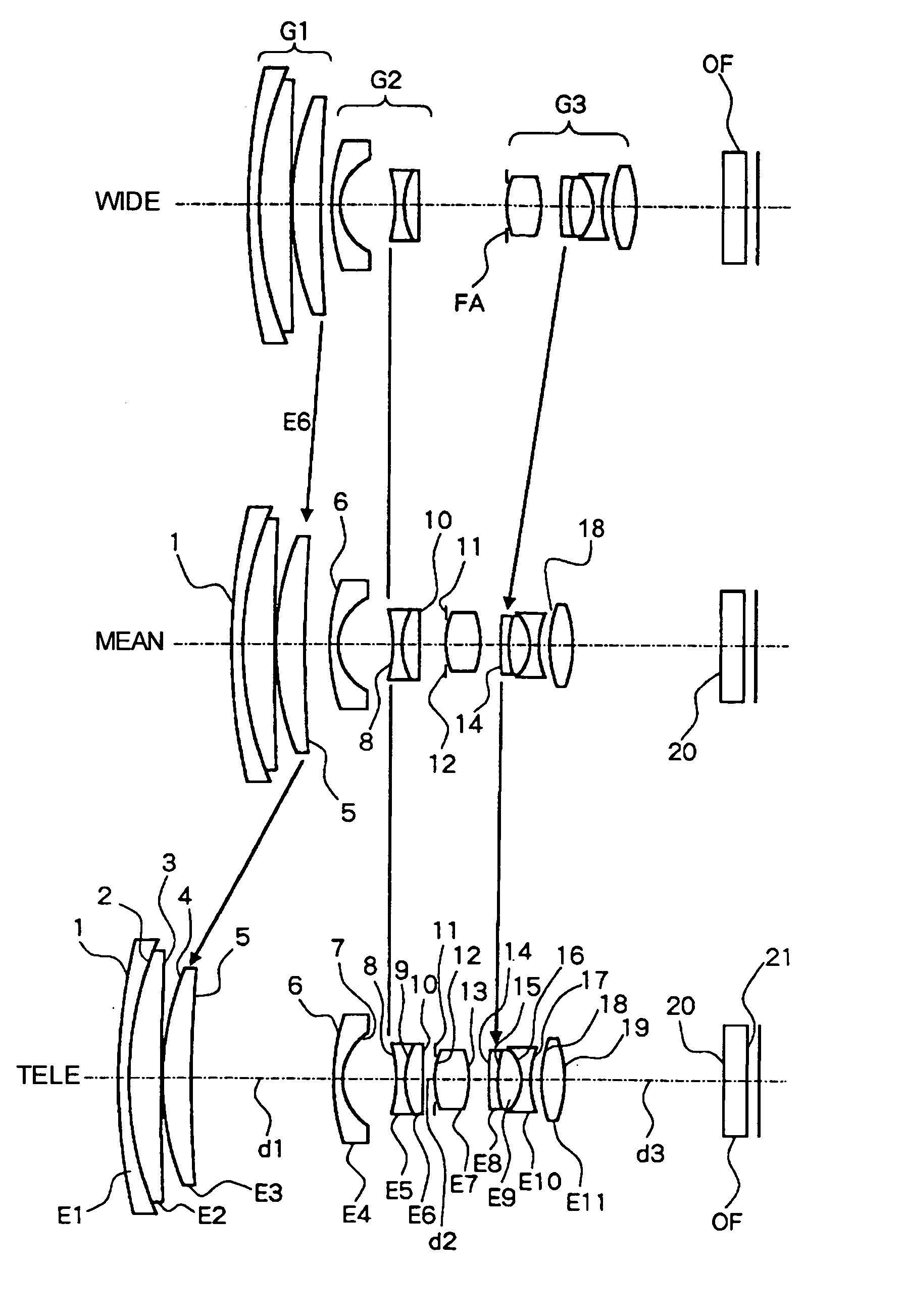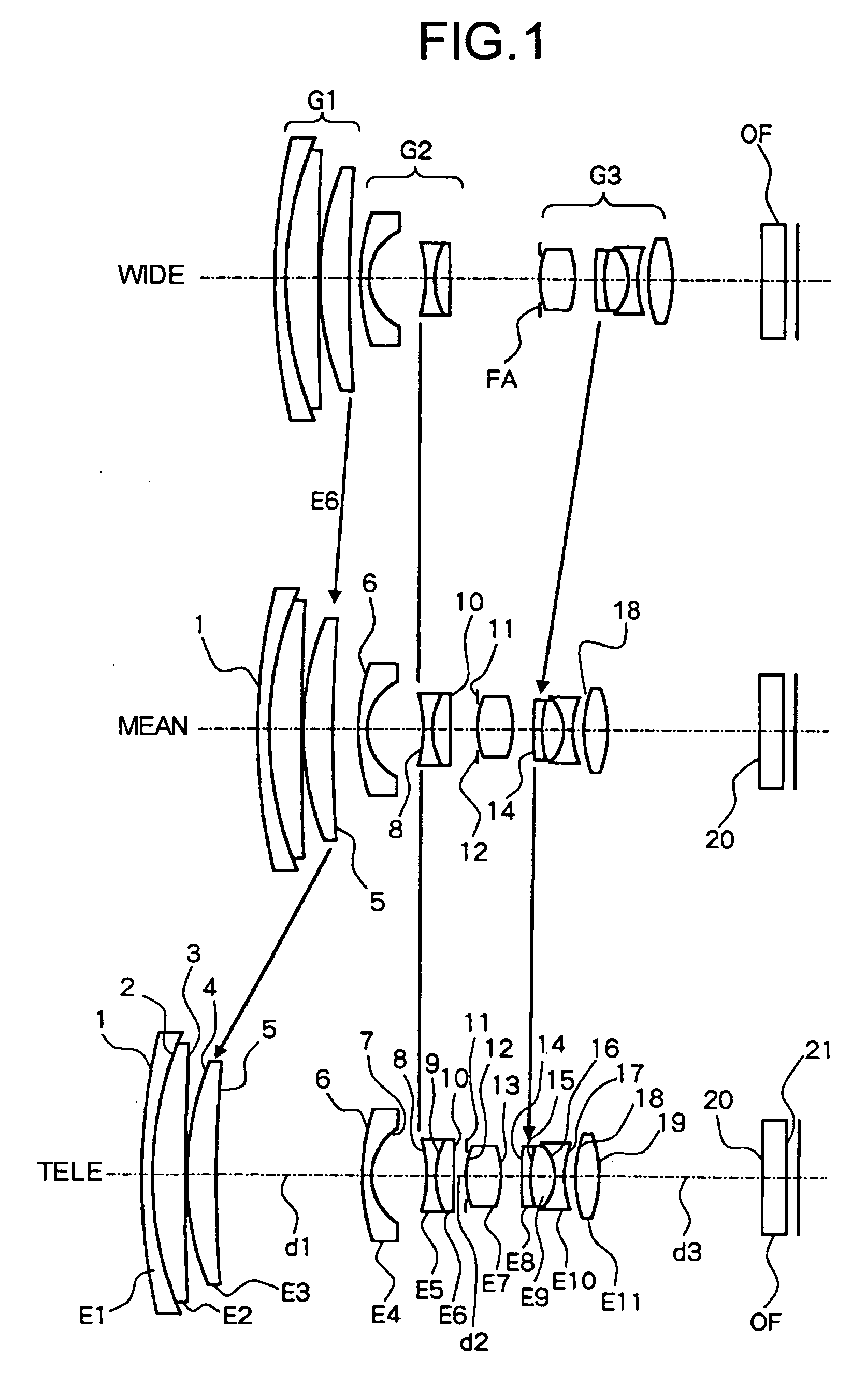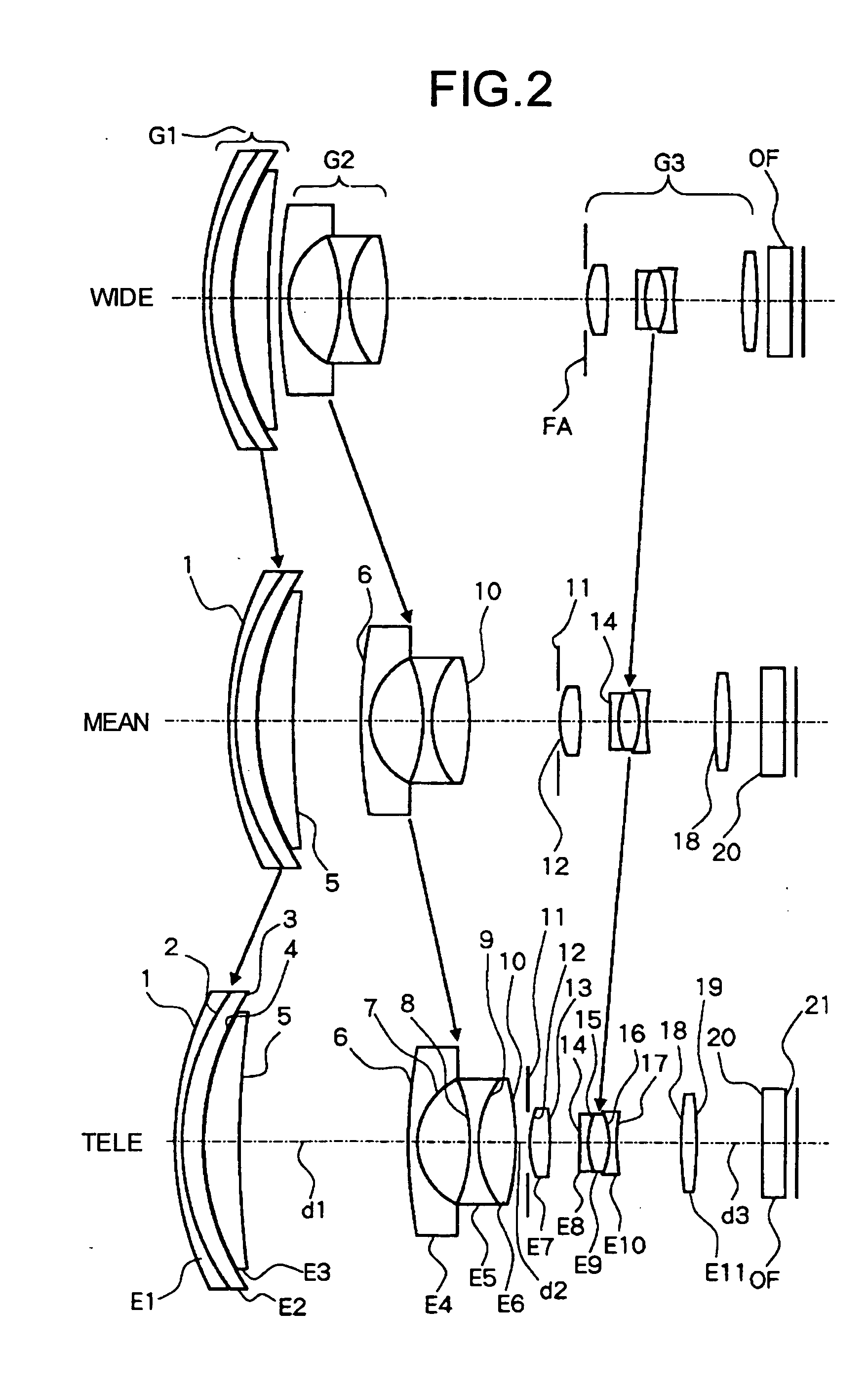Zoom lens, camera, and mobile information terminal
a zoom lens and mobile information technology, applied in the field of compact zoom lenses, can solve the problems of insufficiently satisfying the requirement for a wider angle of view, performance significantly deteriorating in a high frequency domain, and insufficiently satisfying the requirement for high density
- Summary
- Abstract
- Description
- Claims
- Application Information
AI Technical Summary
Problems solved by technology
Method used
Image
Examples
seventh embodiment
[0328] In the respective lenses, a diaphragm for shading a part of beams of a mean angle of view can be arranged between the second group optical system G2 and the third group optical system G3, in the zooming range other than the long focal-length side. Therefore, an example of the aberration diagram when the diaphragm for shading is provided in the seventh embodiment is illustrated in FIG. 15. The position of the diaphragm for shading in this case is as follows.
[0329] Short focal-length side: At a position of 10 millimeters from the second group optical system G2 toward the image surface side.
[0330] Mean focal-length: At a position of 1 millimeter from the second group optical system G2 toward the image surface side.
[0331] In this example, an example, in which the position of the diaphragm for shading and the diameter of the diaphragm are changed in order to shade a part of the beams of the mean image height from the short focal-length side to the mean focal length, is shown, but ...
fifth embodiment
[0531] a zoom lens, which is sufficiently small, can achieve a high magnification, and can obtain a high resolving power corresponding to the image capturing device with 3,000,000 to 5,000,000 pixels, a camera using the zoom lens as the shooting optical system, and a mobile information terminal using the zoom lens as the shooting optical system in the camera unit can be provided.
[0532] Specific configuration and numerical examples are shown in example 3, as an example of the zoom lens according to the sixth embodiment of the present invention. In each example, the aberrations of the zoom lens are sufficiently corrected, and correspondence to the photodetector with 3,000,000 to 5,000,000 pixels becomes possible. It will be obvious from the examples below, that excellent imaging performance can be ensured, while achieving sufficient miniaturization, by forming the zoom lens as shown in the sixth embodiment.
[0533] In each example, various signs as described below are used.
[0534] f: Fo...
sixth embodiment
[0603] a zoom lens, which is sufficiently small, can achieve a high magnification, and can obtain a high resolving power corresponding to the image capturing device with 3,000,000 to 5,000,000 pixels, a camera using the zoom lens as the shooting optical system, and a mobile information terminal using the zoom lens as the shooting optical system in the camera unit can be provided.
PUM
 Login to View More
Login to View More Abstract
Description
Claims
Application Information
 Login to View More
Login to View More - R&D
- Intellectual Property
- Life Sciences
- Materials
- Tech Scout
- Unparalleled Data Quality
- Higher Quality Content
- 60% Fewer Hallucinations
Browse by: Latest US Patents, China's latest patents, Technical Efficacy Thesaurus, Application Domain, Technology Topic, Popular Technical Reports.
© 2025 PatSnap. All rights reserved.Legal|Privacy policy|Modern Slavery Act Transparency Statement|Sitemap|About US| Contact US: help@patsnap.com



